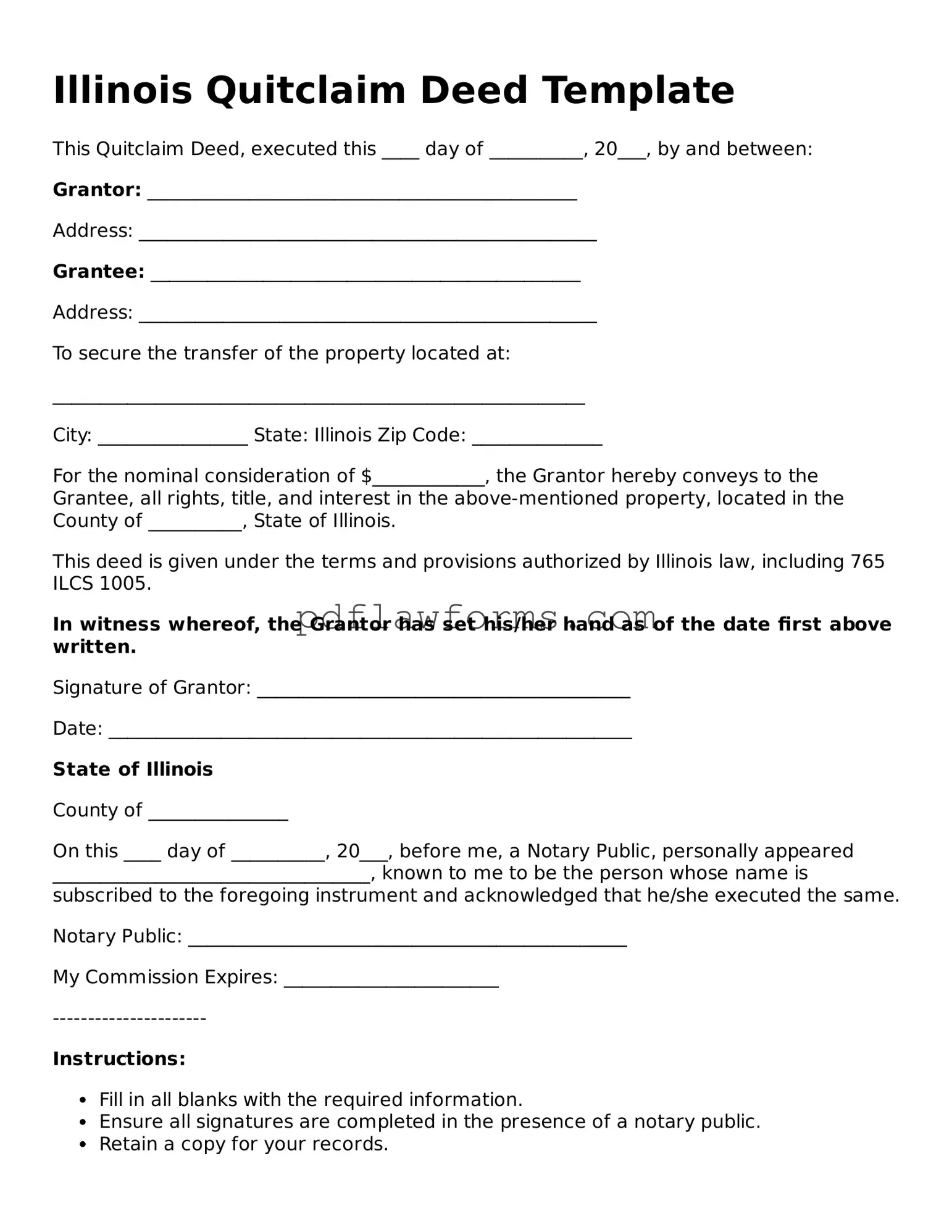When it comes to transferring property ownership in Illinois, the Quitclaim Deed form plays a crucial role. This legal document allows one party, known as the grantor, to relinquish any interest they may have in a property to another party, referred to as the grantee. Unlike other types of deeds, a Quitclaim Deed does not guarantee that the grantor holds clear title to the property; instead, it simply conveys whatever interest the grantor possesses, if any. This can be particularly useful in situations such as divorce settlements, family transfers, or clearing up title issues. Understanding the specific requirements for completing this form is essential, as it must include pertinent details such as the names of both parties, a legal description of the property, and the signatures of the involved parties. Additionally, the form must be properly notarized and recorded with the appropriate county office to ensure the transfer is legally recognized. Given its straightforward nature, the Quitclaim Deed can serve as a valuable tool in property transactions, but it is vital to approach its use with caution and awareness of the implications involved.
